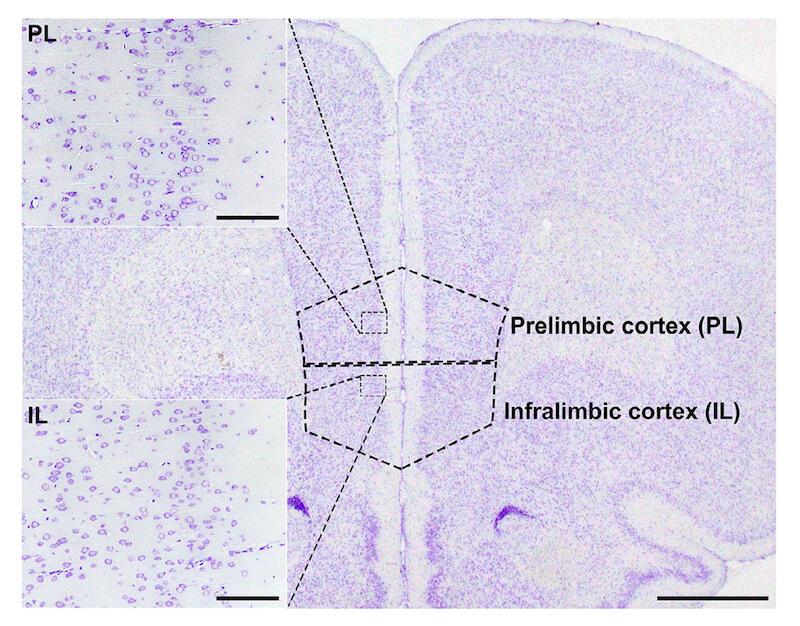An amorphous formula of curcumin (CUR) has shown to enable an improved bioavailability after ingestion. The aim of this study was to investigate the hypothesis that exogenously administered CUR has an advantage in ameliorating post-traumatic stress disorder at low doses. To this end, Long-Evans rats were dietary exposed to CUR at 0.1% or 0.5% from gestational day 6 to postnatal day (PND) 74 or 77. Offspring exposed to 0.1% CUR revealed facilitation of anti-anxiety-like behavior in the open field test and fear-extinction learning tested during PND 62 to 74, increases in hippocampal granule cells expressing immediate-early gene proteins and a decrease in prelimbic cortical neurons expressing phosphorylated extracellular signal-regulated kinase 1/2 after the last trial of the fear-extinction learning test on PND 74. The constitutive gene expression levels of Gria1, Gria2, Grin2d, Slc17a6, and Slc17a7 were altered in the hippocampal dentate gyrus and amygdala on PND 77. These results suggest alterations in synaptic plasticity to strengthen neural circuits in promoting the behavioral effects by 0.1%-CUR. In contrast, 0.5% CUR revealed a lack of any of the changes in behavioral tests that were observed at 0.1%; however, this dose upregulated oxidative stress and neuroinflammation-related genes in the hippocampal dentate gyrus, and increased neural stem cells and proliferation activity of the subgranular zone in the dentate gyrus. These results suggest a possible preventive use of CUR at low doses in mitigating some stress disorders; however, excessively absorbed doses may prevent behavioral changes by inducing neuroinflammation that affects hippocampal neurogenesis involving neural stem cells.
Continuous exposure to amorphous formula of curcumin from the developmental stage facilitates anti-anxiety-like behavior and fear-extinction learning in rats
View as PDF
Junta Nakahara, Yasunori Masubuchi, Kazumi Takashima, Yasunori Takahashi, Ryo Ichikawa, Tomohiro Nakao, Mihoko Koyanagi, Robert R Maronpot, Toshinori Yoshida, Shim-mo Hayashi, Makoto Shibutani
View as PDF